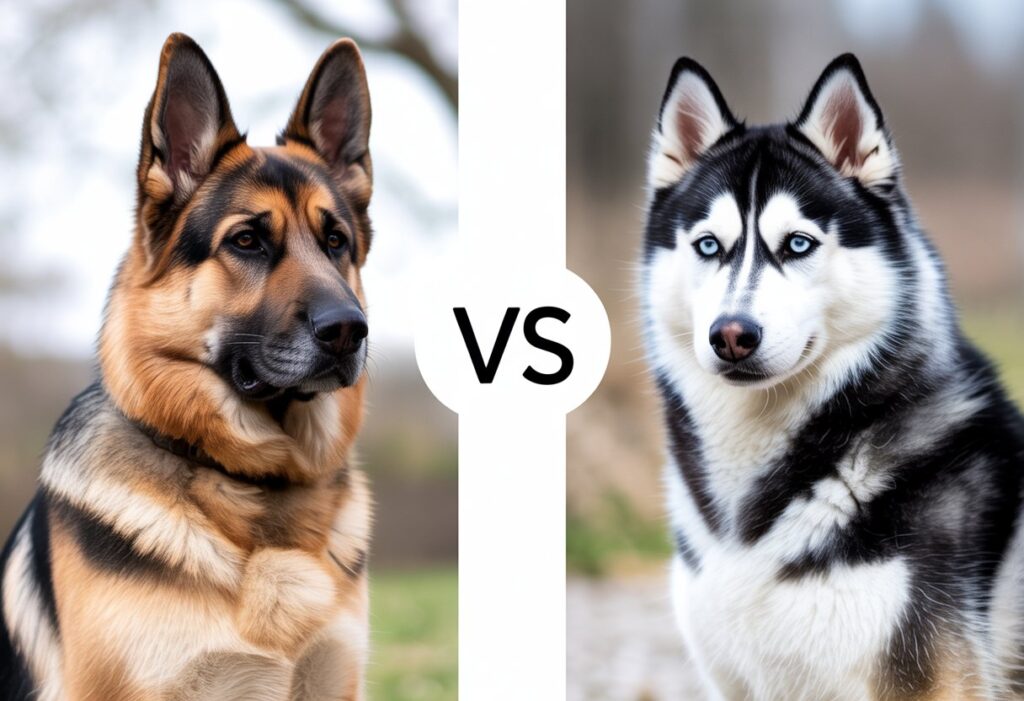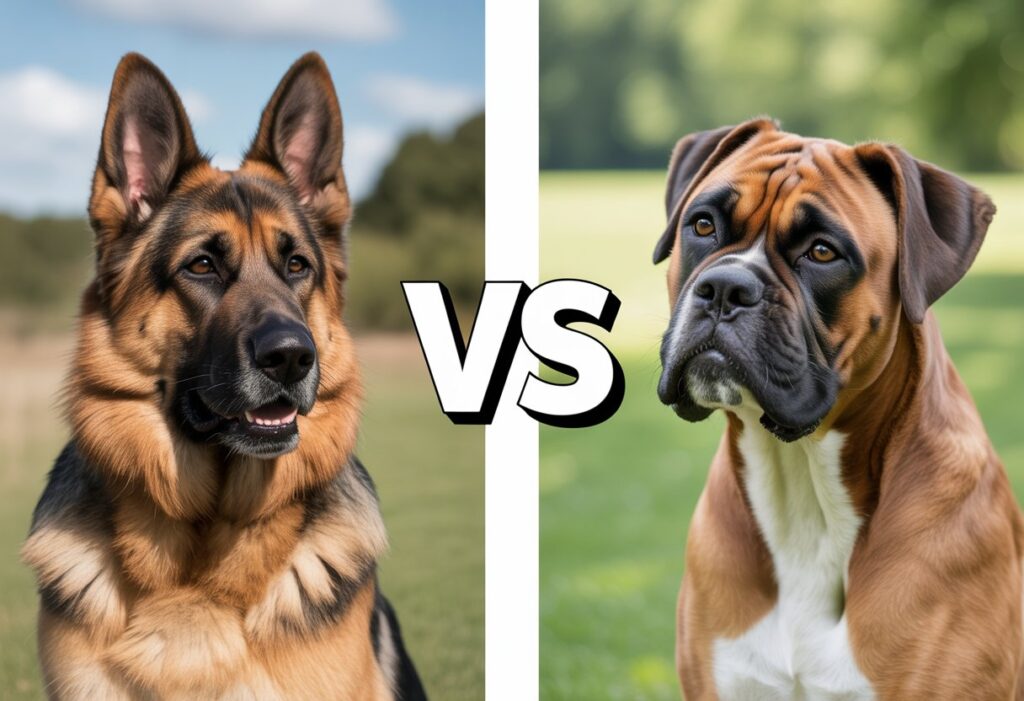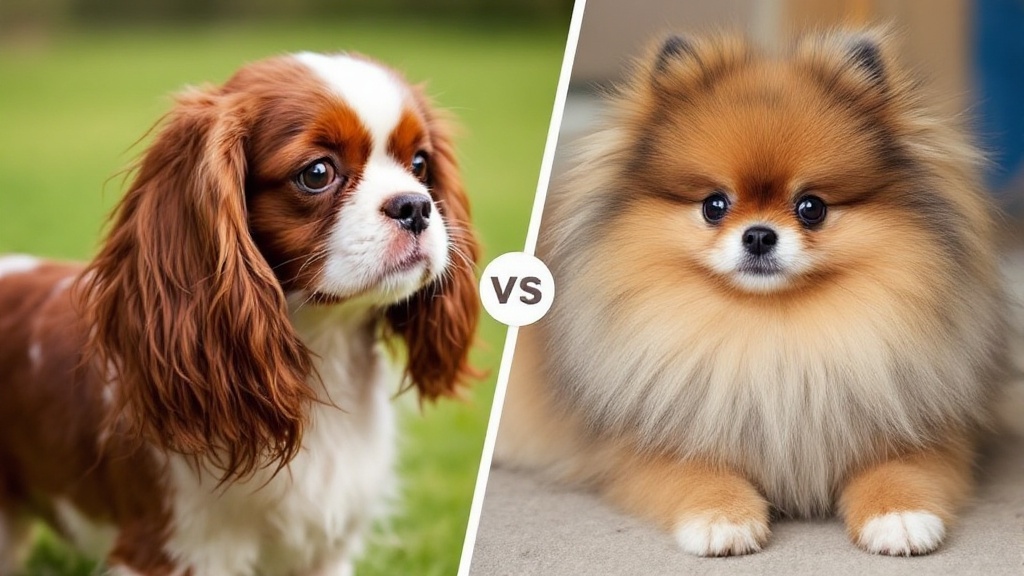Are you stuck choosing between a German Shepherd and a Siberian Husky? Honestly, the best breed for you comes down to your lifestyle, your dog experience, and just what you want in a furry friend.
These two breeds really aren’t much alike. Their personalities, training needs, and care routines all have their quirks.
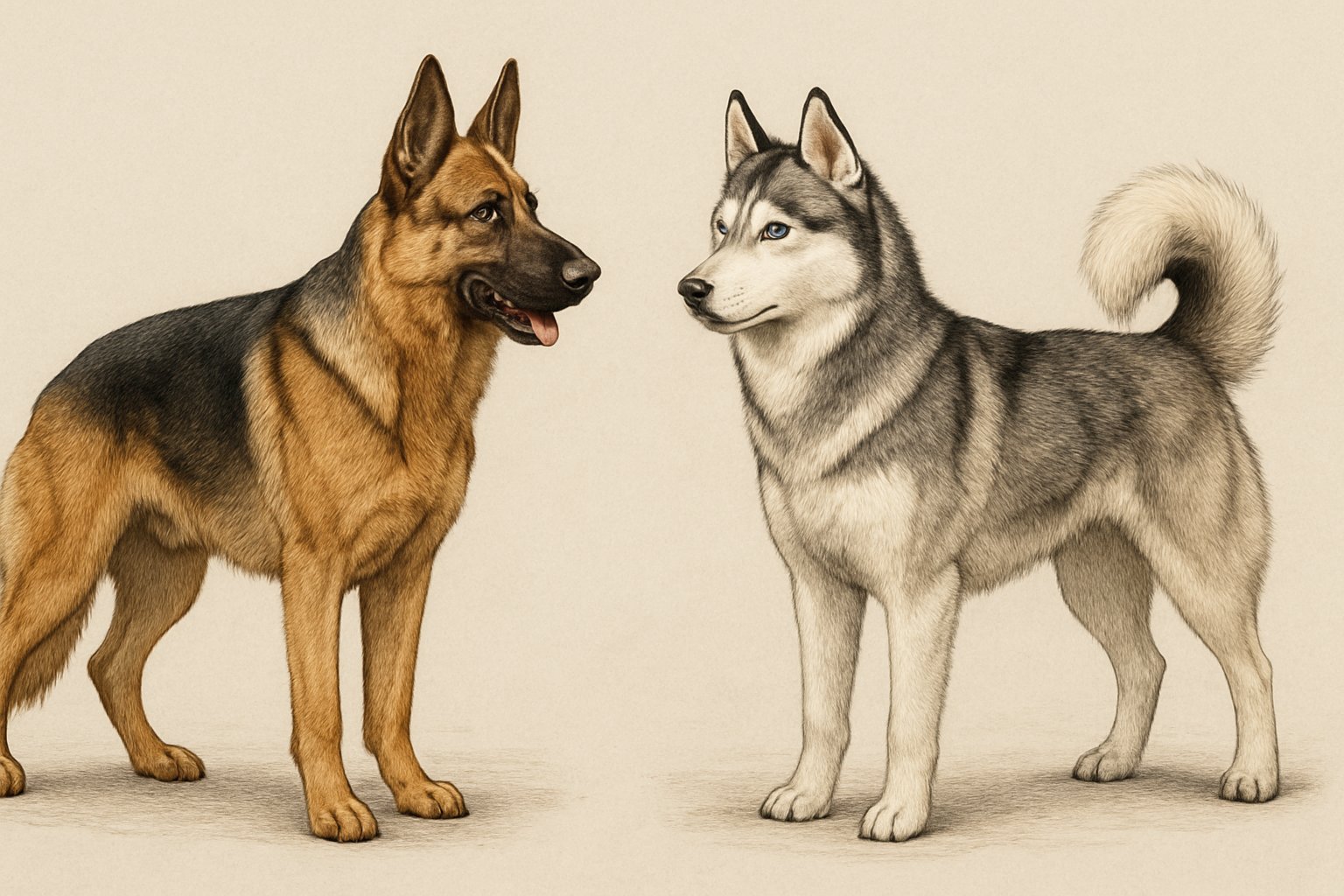
German Shepherds are famous for their loyalty and smarts. Huskies, on the other hand, win people over with their wild energy and go-your-own-way attitude.
Getting a sense of their traits can help you figure out which one will fit your family and routine.
Key Takeaways
- Each breed brings its own vibe and care needs.
- Training, exercise, and grooming aren’t the same for both.
- Your own habits and what you want in a dog matter most.
Overview of German Shepherds and Siberian Huskies
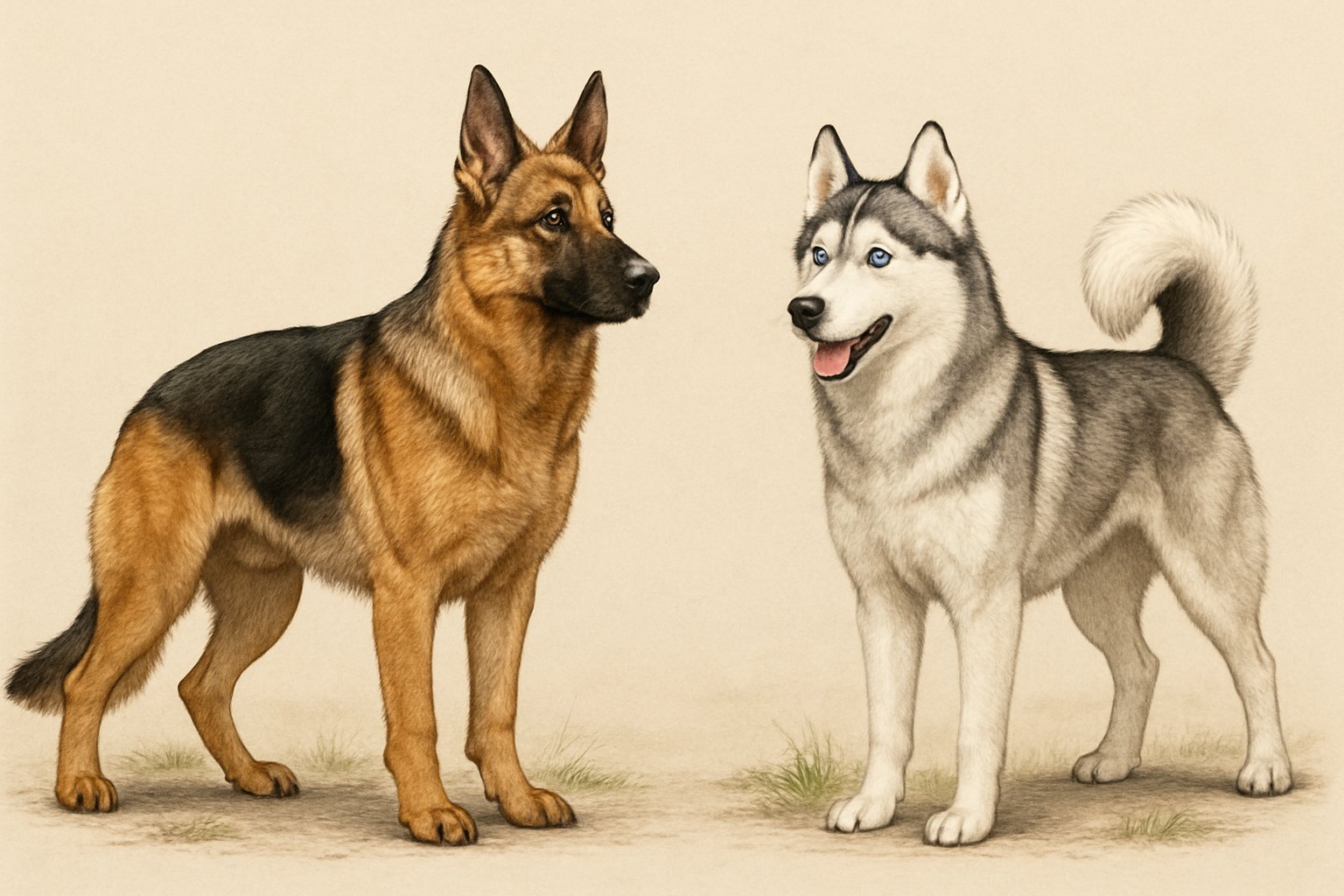
German Shepherds and Siberian Huskies both get a lot of attention for their brains, working drive, and striking looks.
They come from very different places, and you can see that in how they look and what they were bred to do.
Breed Origins and History
The German Shepherd started out in Germany in the late 1800s. Max von Stephanitz wanted a dog that was smart, loyal, and a pro at herding.
Eventually, they started working with the police and military.
The Siberian Husky comes from the Chukchi people in Siberia. These dogs pulled sleds across icy lands, valued for their strength and stamina.
In the early 1900s, Huskies became famous in Alaska for sled racing and even rescue work.
Compared to Alaskan Malamutes and Alaskan Huskies, Siberian Huskies are smaller and speedier. German Shepherds lean more toward guarding and police work, not sledding.
Recognized Standards and Appearance
German Shepherds stand about 22 to 26 inches tall and usually weigh 50 to 90 pounds. Their ears are pointed and stick up, and their double coat is medium to long—often black and tan, but sometimes sable, white, or all black.
Siberian Huskies are a bit smaller: 20–23.5 inches tall and 35–60 pounds. Their eyes might be blue, brown, or even one of each.
Huskies have a thick, double coat in colors like black, gray, red, or pure white.
Both breeds look pretty athletic and wolf-like. German Shepherds are bulkier and more solid, while Huskies are built for speed.
Hybrid dogs like the Gerberian Shepsky mix features from both, often with wild coat colors and mixed eye patterns.
Here’s a quick table:
| Feature | German Shepherd | Siberian Husky |
|---|---|---|
| Height | 22–26 in | 20–23.5 in |
| Weight | 50–90 lbs | 35–60 lbs |
| Coat | Medium/Long, dense | Double, thick |
| Common Colors | Black/tan, sable, black | Gray, black, red, white |
| Eye Colors | Brown, amber | Blue, brown, mixed |
Temperament and Personality Traits
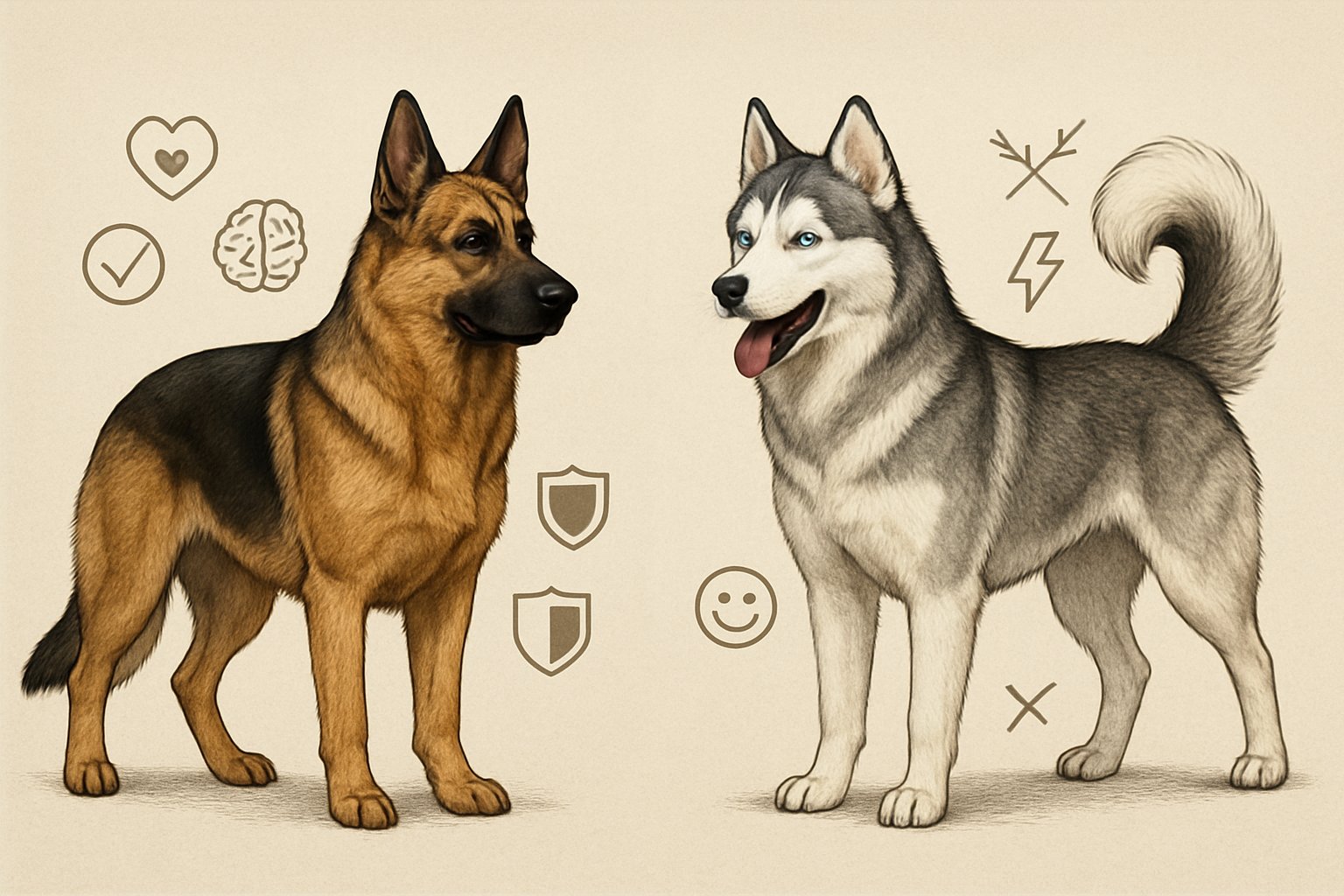
German Shepherds and Siberian Huskies have totally different personalities.
Both need attention and care, but their quirks can really affect how they fit in your home and daily life.
Family Compatibility and Social Behavior
German Shepherds are loyal and protective. They get attached to their families and are usually gentle with kids.
Thanks to their guarding instinct, they can be a bit wary of strangers.
Siberian Huskies are the social butterflies of the dog world. They’re friendly, do well with other dogs, and love being around people and pets.
They’re not natural guard dogs and usually don’t bark much at new folks.
If you want a dog that’s dedicated and can help keep your house safe, a German Shepherd might be the one. If you’d rather have a playful, outgoing buddy, Huskies are hard to beat.
Huskies especially like having other dogs around—they’re just happier in a pack.
Mental Stimulation and Energy Levels
Both breeds need regular mental stimulation and lots of exercise.
German Shepherds are super smart and need jobs—things like obedience training or puzzle toys keep them happy. If they get bored, they can get destructive.
Siberian Huskies are clever too, but in a different way. They were bred to run for miles, so they’ve got energy to burn.
Walks, runs, and active games are a must, but Huskies especially love running and pulling.
If you’ve got the time and energy for daily activities, either breed can work. German Shepherds love skill-based games; Huskies want to run and play hard.
Prey Drive and Interaction with Smaller Animals
German Shepherds usually have a moderate prey drive. With some training, they can live with small animals, but you’ll want to supervise at first.
They might chase cats or rabbits if you don’t train them early.
Siberian Huskies have a very high prey drive. It’s in their DNA from their sled dog days.
They’re more likely to chase and even catch smaller pets, so they’re not the best choice if you have cats or rabbits.
If you’ve got small pets, a German Shepherd is probably safer—but still, watch out. Huskies, well, they’re just more likely to see your bunny as a snack.
Game of Thrones fans love Huskies for their wolfy looks, but those hunting instincts are very real.
Training and Intelligence
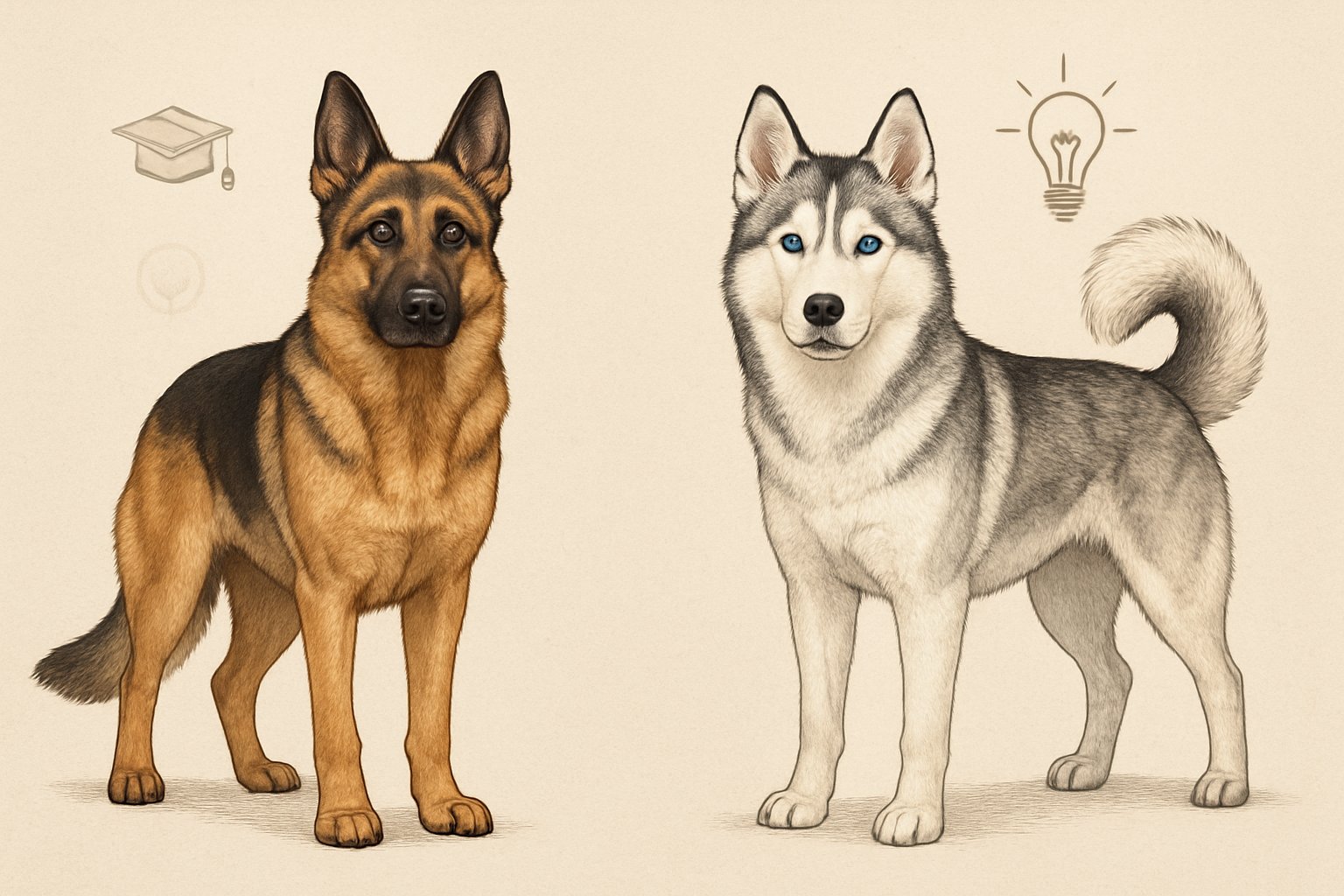
German Shepherds and Siberian Huskies are both sharp, but training them feels totally different.
Your approach really matters if you want to get the best out of either dog.
Trainability and Learning Styles
German Shepherds pick up commands fast and want to please you. That’s why they’re so popular as police or service dogs.
Their focus makes training a breeze.
Huskies are quick learners too, but they’re stubborn and independent.
Sometimes they’ll decide whether your command is worth following, especially if they’re bored. Short, fun sessions work best—otherwise, they’ll just tune you out.
| Breed | Trainability | Attitude During Training |
|---|---|---|
| German Shepherd | Very High | Eager & Focused |
| Siberian Husky | Moderate | Independent & Playful |
German Shepherds are easier for complex tasks. Huskies? Simple commands and a lot of patience are your friends.
Positive Reinforcement Techniques
Both breeds do best with positive reinforcement. Treats, praise, or toys are great rewards and help build trust.
German Shepherds like clear structure and calm praise. They get stressed if you’re harsh, so patience is key.
With Huskies, keep it fun—games and short sessions keep them interested.
Try to keep training to 5-10 minutes at a time; otherwise, they’ll get bored. Both breeds can ignore you if things drag on.
Skip physical punishment. It just makes things worse and builds fear.
Consistency and patience really pay off. Practice regularly, use a happy voice, and make your expectations clear.
Physical Characteristics and Grooming
German Shepherds and Siberian Huskies look pretty different, and their grooming needs aren’t the same either.
Both shed a lot, but how you manage their coats matters.
Size, Build, and Coat Colors
German Shepherds are strong and muscular, usually 22–26 inches tall and 50–90 pounds. Their bodies are longer than they are tall, with a straight back.
Siberian Huskies are smaller and lighter: 20–23.5 inches and 35–60 pounds. They’re built for speed and endurance, with a more athletic frame.
Coat colors are pretty eye-catching:
- German Shepherds: Mostly black and tan, black and red, sable, or solid black.
- Siberian Huskies: Agouti, black, gray, red, or pure white, often with cool masks or markings.
Both have double coats, but the feel and thickness can be different.
Grooming Needs and Shedding
Both breeds shed—sometimes a ton, especially when seasons change. Regular grooming helps keep their fur healthy and your house less hairy.
Grooming basics:
- Brush at least 2–3 times per week.
- During shedding season, daily brushing might be needed.
- German Shepherds have straighter, coarser fur that can mat up if you don’t brush.
- Siberian Huskies have softer fur; it needs attention too, but mats less.
Baths? Only when needed, or you’ll dry out their skin. Don’t forget regular checks for fleas and debris.
Health, Care, and Suitability
German Shepherds and Siberian Huskies each have their own unique needs. Both need regular exercise, good food, and an owner who’s up for the job.
Common Health Concerns and Lifespan
German Shepherds can run into hip and elbow dysplasia, which can lead to pain and trouble moving as they get older. They might also develop degenerative myelopathy, which weakens their back legs.
Siberian Huskies are usually better off in the joint department, but they can get eye problems like cataracts or PRA (progressive retinal atrophy), which can cause vision loss. Hypothyroidism is another risk, leading to weight gain and low energy.
Huskies usually live 12 to 14 years, while German Shepherds live about 9 to 13 years.
Some health issues are less common in these breeds than in others, like Rottweilers or Pit Bulls, who get more heart or skin problems.
Regular vet visits, early screening, and keeping your dog’s weight in check are important. Good breeders test for major health problems before selling puppies.
Exercise Requirements and Lifestyle Fit
Both breeds need a lot of activity every day.
A German Shepherd does best with structured exercise—walks, runs, or training for at least 60–90 minutes a day. They also like mental challenges, like obedience work or puzzle toys.
Siberian Huskies have energy to spare. You’ll need to give them at least 90 minutes of exercise daily—running, playing, hiking.
If they don’t get enough, Huskies can get bored and destructive.
These breeds aren’t great for people who want a laid-back or super busy lifestyle. If you’re active, have space, and like being outside, either breed can fit in.
Apartment living is tough with these guys—they just need room to move.
Neutering and Responsible Ownership
Neutering helps prevent unwanted puppies. It can also lower the risk of certain health problems.
For German Shepherds, it’s usually better to wait until your puppy is at least 12–18 months old. Early neutering can mess with bone growth and might lead to joint issues.
Huskies can be neutered too, often after 6–12 months. Timing really depends on what your vet thinks is best.
Good ownership goes way beyond neutering. Training, socialization, and regular vet visits all matter a lot.
Dogs need attention to their emotional needs, too. German Shepherds and Huskies both do best with firm but gentle guidance, and honestly, they crave positive interaction.
Most places don’t ban German Shepherds or Huskies, unlike breeds like Pit Bulls or Rottweilers. Still, local laws might require registration or special rules.
Owning either breed is a big commitment. You’ll need time, money, and a lot of dedication—no way around that.

